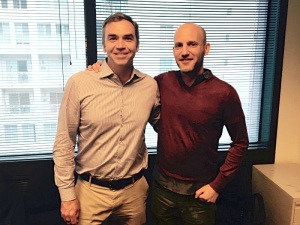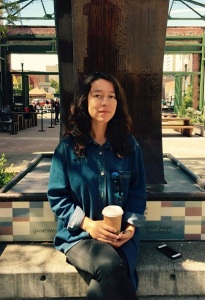When a nonprofit arts organisation installed public seating to connect communities in San Francisco, they had no idea that resulting tensions would lead to its removal. Here, the people involved share their story – and their hopes for the future of public art and inclusive streets

On a busy street in San Francisco, known as much for crime and homelessness as swanky cafés and sleek towering apartments, the city’s economic extremes come into sharp relief: technology workers pour into the companies ushering in the future, passing by those left behind by the city’s boom.
Public art can reach broad audiences, and we felt this particular SF neighbourhood, Central Market, was ripe for a project that could start building bridges. While public art is not designed to solve systemic problems, it can serve as a vehicle for bringing people together in new ways and for developing creative interventions.
Last year, our foundation – the Kenneth Rainin Foundation – awarded its first public art grant to the Luggage Store Gallery, a long-time Central Market Street organisation, for the ambitious “Light Up Central Market.” This project included illuminating the area’s murals at night and installing a sculptural element called “Block by Block”, a platform intended to offer some fun, encourage interaction, and incorporate visual novelty into what is now an empty streetscape with few places for gathering.
“While public art is not designed to solve systemic problems, it can serve as a vehicle for bringing people together in new ways”
Central Market’s lack of seating isn’t a coincidence. As the boulevard of grand theatres and department stores decayed during 1960’s BART subway construction, the benches that had become resting places for homeless people were removed. More recently, the chess tables on Market Street were cleared away along with the heavy chains between posts along the street. As new money pours into the area, the only seating is private, the property of cafés catering to the city’s more affluent.

“Block by Block” was intended to change that. The piece was designed by Marisha Farnsworth of Hyphae Design and installed near Sixth and Market streets. The series of platforms invited people to sit down, with a swing, lighting, and a soundscape.
The installation was taken up by a group who stayed all day and played music into the night. Soon, passersby reported that people were selling drugs and making them feel uncomfortable. In two cases, attacks were reported. Complaints from local merchants, the city, and people living nearby began to pile up. In a country where issues of class and race are at a boiling point, “Block by Block” plunked those tensions right into the heart of San Francisco’s polarising economic boom.
Bringing art to that spot had been a feat of collaboration , requiring permits, coordination among city departments, and buy-in from nearby merchants and arts organisations. These relationships were tested as the discord mounted, and eventually, the city informed the Luggage Store that the platform had to go. In May 2016, eight months after arriving on Market Street, “Block by Block” was relocated to a sidewalk out in Mission Bay, a newly developed neighbourhood of hospitals and biotech companies with little foot traffic.
We wanted to start a conversation about what happened, so we spoke to local stakeholders. Excerpts of some of the interviews are below:
Wayne Shaw, local resident
“I have back problems. I wish there was somewhere to stop and sit on Market Street, but I have to force myself to keep going because there’s nowhere to sit. So when “Block by Block” first came, I was the first person there: I met the artist, I sat on there, and it was a needed convenience and a great novelty.
But the people out there, they don’t see it as a place to be appreciated or to sit down, they see it as a place to sell drugs. They congregate there and it becomes like a territory.
There was some hostility against “Block by Block” that I didn’t feel was deserved [from other residents]. They would say, “I’m working to stay off drugs, I don’t need this right here.” Still, the complaint cannot be levelled at the structure itself. This neighbourhood is a dumping ground, man. This is where you go when you ain’t got nothing, and are trying to get something.
A lot of us in my SRO (single room occupancy) hotel live by the skin of our teeth, and we don’t have opportunities to leave that building: our Section 8 (government rent assistance) doesn’t apply anywhere but that building.
I’m not glad that the “Block by Block” installation is gone.”
Neil Hrushowy and Paul Chasan, city planners
 “No one had done this successfully for 40 years on Market Street – any sort of installation meant for the public to hang out. We’d done a lot of work as a city to actually remove those things and discourage new ones from coming up.
“No one had done this successfully for 40 years on Market Street – any sort of installation meant for the public to hang out. We’d done a lot of work as a city to actually remove those things and discourage new ones from coming up.
We were looking for ways to bring public life back to Market Street in a way that’s truly inclusive, and invites everyone to be there. It’s not for one group or for the other. And this was a really critical step along the path to learn how to do that.
“Block by Block” was the only comfortable place to sit on Market Street. People were partying and playing music into late in the night, but people were also vomiting and there was defecation around it. A tourist was taking a picture and people were dealing drugs and didn’t want to be in the picture, so they knocked her down and broke her camera. We also had a separate incident where we had a college bring students out there to learn how to do urban prototyping. One of the students was assaulted with a knife.
With the San Cristina Hotel [nearby single room occupancy (SRO) hotel], it was a vulnerable population on Market Street that we had no business imposing upon in that way. We have to see this as reopening Market Street for a lot more art down the road, versus the life of this one installation.”
Marisha Farnsworth, artist
“Our hope with “Block by Block” was it would bring people together. You have a really diverse population in the neighbourhood: techies, people living in SROs [single room occupancy hotels], homeless people, and tourists…anyone can sit on “Block by Block”, unlike say a café behind a little wall. The idea behind “Block by Block” was to create a space that wasn’t obviously programmed.
When we installed it, I saw tourists taking photos there, people eating lunch there, it was just nice to have a break from the monotony of the sidewalk. But as time went on, you had people sitting outside at the tables at a nearby food court, and the people sitting on “Block by Block”: you could really see a divided population.
Some city officials said the neighbourhood wasn’t “ready to try art.” Yes, it is. I think part of the reason people were so upset when “Block by Block” was removed was that it provided a sense of place and people had become emotionally attached to it. They also took responsibility for the project in some ways. If I ever brought out a broom, the people hanging out would help clean and would discourage other people from graffiti-ing.
I definitely think it provoked a lot of really interesting conversations in the city. And I’m not talking about discussions about art ; I mean discussions about what’s really going on in the neighbourhood. And to me, that’s a success.
Block by Block was a public art project funded by the Kenneth Rainin Foundation, a nonprofit based in Oakland, California and focused on championing the arts, promoting early childhood literacy and supporting research to cure Inflammatory Bowel Disease. This piece is an edited excerpt of an article originally published on Medium, where you can read more interviews with stakeholders.


